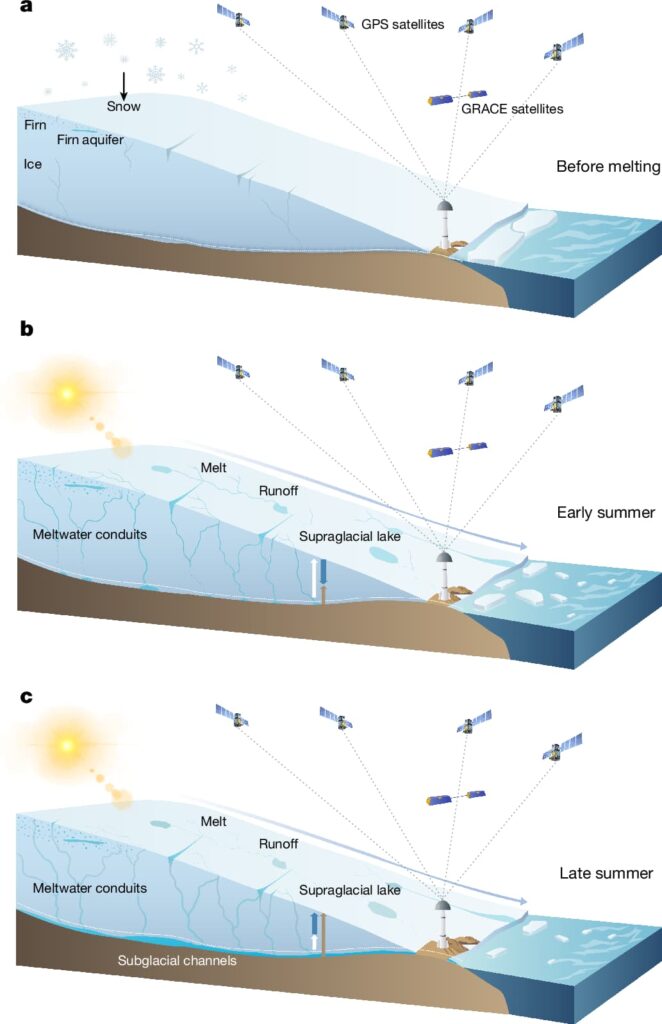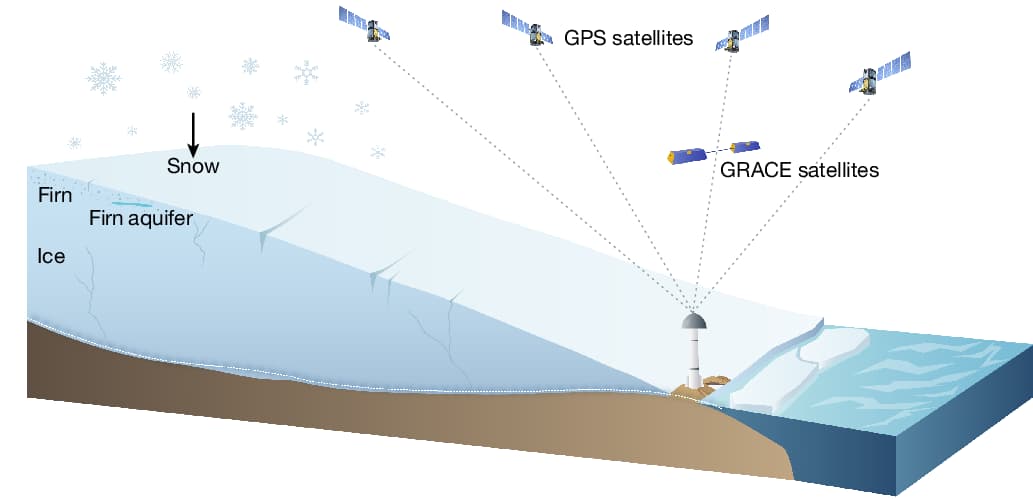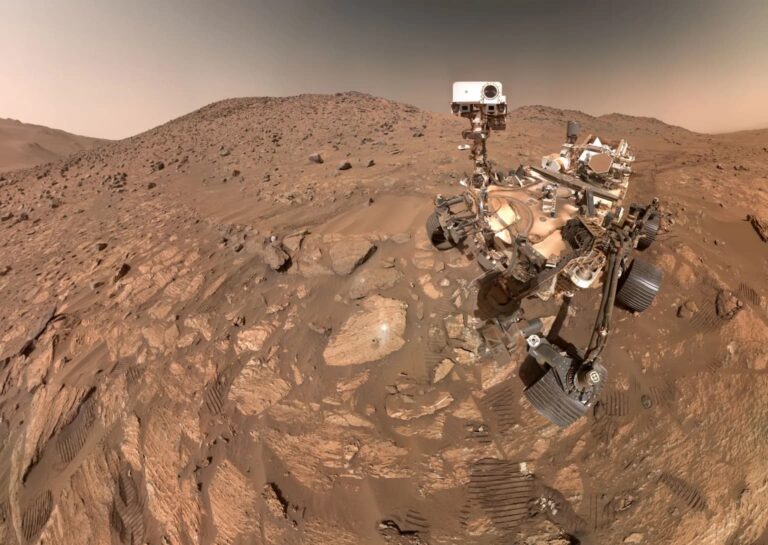Unlocking the Secrets of Greenland’s Ice Sheet: A Story of Water, Ice, and Sea Levels
Imagine a giant ice cube, twice the size of Texas, sitting atop a bedrock foundation. This is the Greenland Ice Sheet (GrIS), the Earth’s second-largest ice body, holding enough frozen water to raise global sea levels by a staggering 24 feet. But here’s the fascinating part: this ice giant has a hidden talent – seasonal water storage.
The Summer Water Storage Surprise
Every summer, as the GrIS melts, some of the water doesn’t immediately flow into the ocean. Instead, it gets temporarily stored within the ice sheet itself. This phenomenon not only affects the ice’s overall dynamics but also has a profound impact on sea levels. Recently, scientists made a groundbreaking discovery: the stored water actually depresses the bedrock, creating a measurable shift in the ice’s underlying support structure.
Cracking the Code with GNSS Technology
Using advanced GNSS (Global Navigation Satellite System) technology, researchers from the Greenland GNSS Network (GNET) tracked these subtle bedrock shifts, revealing a new way to gauge the amount of water stored within the GrIS. This innovative approach has far-reaching implications for understanding the ice sheet’s behavior and predicting future sea-level changes.

Image credits: Nature
Why Water Storage Matters: A Ripple Effect
The GrIS stores water in multiple ways:
- Surface Water: Supraglacial lakes form as the ice melts, with water draining through cracks into the ice below.
- Subglacial Storage: Water is stored at the base of the ice sheet, acting as a lubricant, accelerating ice flow toward the sea.
This temporary water storage has a ripple effect on both the ice sheet’s movement and the rates at which water reaches the oceans. By understanding these cycles, scientists can refine estimates of seasonal meltwater storage.
Regional Variability: A Patchwork of Water Storage
The study highlights notable regional differences in water storage across Greenland. The southeastern region, with its steep terrain and narrow melting zone, has a much faster water drainage rate than the north. This disparity is crucial, as each region’s storage and drainage rates shape how meltwater contributes to sea-level rise.
Looking Ahead: Enhancing Future Projections
This research emphasizes the invaluable role of GNSS data in detecting and measuring water storage in ice sheets. By integrating these findings, scientists and climate modelers can:
- Improve predictions of future GrIS projections
- Enhance understanding of broader ice mass changes in response to climate warming
- Refine models to more accurately project how Greenland’s meltwater will contribute to sea levels as Arctic temperatures rise
The Takeaway: Unlocking the Secrets of the Greenland Ice Sheet
As we face a warming planet, understanding the interplay between Greenland’s ice, water storage, and sea levels is crucial for both scientific advancement and climate action. This research is a significant step forward, offering a glimpse into the complex dynamics of the Greenland Ice Sheet and its impact on our planet’s future.
Share Your Thoughts:
- How do you think this research will impact our understanding of climate change?
- What do you believe are the most pressing climate action steps we should take in response to this study?
Related Resources:
Journal: Nature
Article Title: “Vertical Bedrock Shifts Reveal Summer Water Storage in the Greenland Ice Sheet”
Lead Author: Jiangjun RanAffiliations: Southern University of Science and Technology, Shenzhen, China, with contributions from other institutions including Delft University of Technology (Netherlands), Utrecht University (Netherlands), and the Technical University of Denmark.
Link to Article






